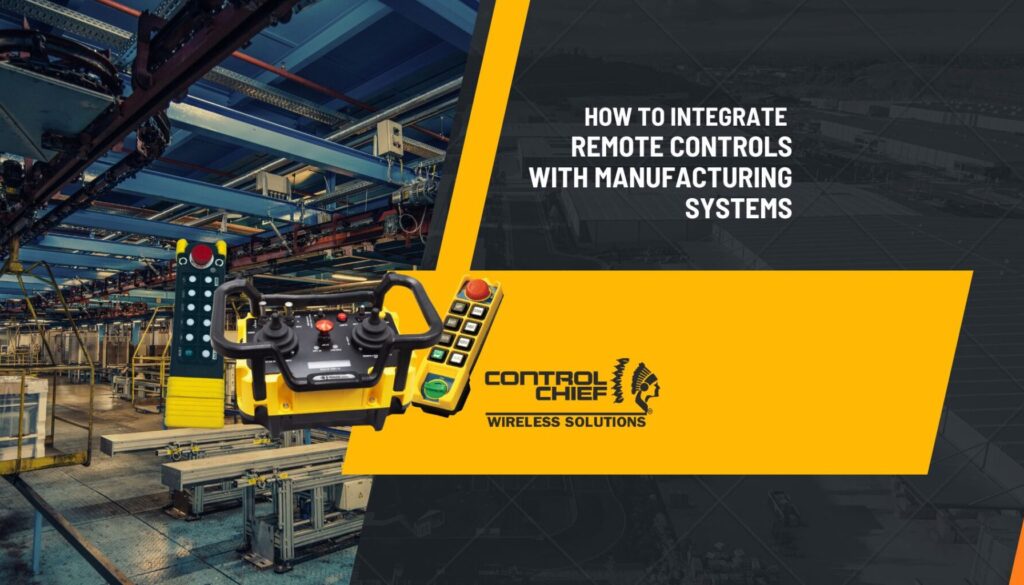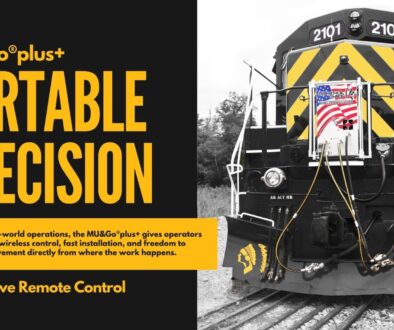How to Integrate Remote Controls with Manufacturing Systems

Why Integrate?
In today’s manufacturing environment, the pressure is on to deliver more, faster, and with greater precision—while keeping downtime and errors to a minimum. Seamless remote control integration is a powerful way to achieve these goals. By linking wireless controls to cranes, doors, conveyors, and even robotic systems, manufacturers gain the flexibility to adapt on the fly, automate repetitive tasks, and maximize uptime.
But integration isn’t just about adding new hardware—it’s about crafting a solution that fits your unique facility, processes, and future growth plans.
Custom Integration: The Control Chief Advantage
At Control Chief, we know that every facility is different. That’s why our in-house engineering team partners with you from day one, designing custom remote control integration solutions tailored to your specific automation requirements.
Our process starts with a thorough site assessment, followed by design, prototyping, testing, and installation support. We don’t believe in “one size fits all”—we believe in “what fits you best.”
Common Integration Methods
Integration can take many forms, and our team helps you select and implement the best fit for your operation:
- Direct PLC/Industrial Network Integration:
Our remotes can communicate via common industrial protocols (like Modbus, Profibus, Profinet, or Ethernet/IP), making them compatible with a wide range of automation systems and allowing for easy expansion or upgrades later. - Relay & I/O Connections:
For legacy machines, we design solutions that mimic the functionality of traditional pushbuttons and switches—no major retrofits required. - Centralized Hubs & Gateways:
We can aggregate controls for multiple devices or zones, enabling coordinated workflows and central management of operations. - Custom Hardware/Software Solutions:
Have a unique process or highly specialized equipment? Our engineers develop custom code, enclosures, and integration modules that connect remote controls to virtually any part of your manufacturing line.
Pitfalls to Avoid
Even the most promising technology can fall short if these common mistakes aren’t addressed:
- Ignoring Site-Specific Needs:
Off-the-shelf systems may miss nuances in your facility layout or process requirements. Custom engineering ensures you get what actually works in your environment. - Forgetting Security:
We build in robust encryption and secure protocols to protect against interference and unauthorized access, keeping your operations safe. - Underestimating Training:
Our solutions come with full training packages, ensuring operators, maintenance, and IT teams are all equipped for long-term success. - Lack of Ongoing Support:
At Control Chief, our relationship doesn’t end with installation. Our engineers and support staff remain available for troubleshooting, system expansion, and continuous optimization.
Getting Started
Here’s how Control Chief guides you through the integration journey:
- Consultation & Assessment:
We start by understanding your unique challenges, goals, and facility infrastructure. - Custom Design:
Our engineers craft a tailored solution, selecting the right remote technology, integration method, and safety protocols. - Prototyping & Testing:
We build and test your system—either at our facility or on-site—making adjustments for performance and reliability. - Installation & Training:
Our team supports your installation and provides thorough training for every level of your operation. - Ongoing Support & Optimization:
With Control Chief, you gain a partner committed to your long-term success—ready to adapt your system as your operation evolves.
Ready for True Integration?
Don’t settle for cookie-cutter controls that only solve part of the problem. Trust Control Chief’s engineering team to design and deliver a custom remote control integration that truly fits your manufacturing automation needs.
Contact Control Chief today for a consultation and discover how we can help you achieve more uptime, smarter workflows, and next-level control.
Views: 22



